When Phillip Golub sits at the piano, there’s a chance you’ll encounter structured composition, intuitive improvision, or, more likely, some combination of both. The Brooklyn-based pianist’s musical inclinations often collapse into each other. Described by the Wall Street Journal as "a musician in fast ascent" and praised by Downbeat for his "seemingly boundless creativity," Golub speaks a rare musical language where complex ideas transform into emotional resonance without sacrificing intellectual depth.
Growing up in a musical household with a composer father, Golub absorbed influences ranging from Bill Evans and Schubert to Erroll Garner and Bach. This rich foundation allowed him to develop an approach to music-making that prizes collaboration above individual virtuosity. "At some point, I gradually realized that what's important is not to figure out how to 'find' your voice, but rather how to create the conditions around yourself for collaborative music-making," Golub says. This philosophy of musical community informs all aspects of his creative process—whether he's developing a quintet recording over months of careful rehearsal or exploring microtonality through experimental piano techniques.
Golub's recent work with 22-tone equal division of the octave (EDO) systems, heard on his Greyfade albums Filters and Loop 7, represents an expansion of Western harmonic possibilities, allowing him to discover new consonances and dissonances that exist between the familiar twelve tones of equal temperament. Yet even in these experimental spaces, Golub maintains what he describes as music's essential "magic"—the inexplicable quality that defies rational explanation. Performers of his work navigate between precisely notated passages and interpretive freedom, creating music that exists in a liminal space. At the same time, Golub’s pieces respect tradition without being constrained by it.
Phillip Golub was a recent guest on the Spotlight On podcast for an enticingly deep dive into his process and the nature of EDO systems. He and host Lawrence Peryer also touched upon the path from classical music to microtonality, how a modern version of a player piano made Loop 7 possible, what Phillip learned from Wayne Shorter, and the method of modifying a vibraphone with window putty. You can listen to the entire conversation in the Spotlight On player below. The transcript has been edited for length, flow, and clarity.
Slowed-Down Improvisation
Lawrence Peryer: Something that often happens when we get into process music—we can get caught up in the intellectualism of it, but I find that especially in Loop 7 and Filters, the music maintains so much humanity. How does one not over-intellectualize it?
Phillip Golub: I've always been an intuitive composer and musician. When I would learn about how some composers at some time set themselves strict parameters to write a piece, I was always curious about what that could produce. Still, I never felt like, "Oh, that makes it credible, worthwhile, or more valuable." I never felt that, though I'd sometimes notice my colleagues in school would. That's just not a feeling I ever shared.
I became interested in music for the visceral things it would make you feel and, fundamentally, that feeling you get when you hear something you haven't heard before that you're attracted to, and you say, "Wow, I didn't know that was possible. I didn't know you could do that with instruments, sound, human bodies, and musical tools.”
Loop 7 has some pretty strict process elements, but I happened upon it. It's there, but it's not what the piece is about. The piece isn't about showing you that process; that's just a thing that helps me do something.
My composing process my whole life, from when I was very little to this day, is essentially very slowed-down improvisation. I'm messing around with something, finding something, sketching it out, and then I might say, "Okay, it looks like I have this thing that could turn into a device or a tool or become a process." And then I might see it through, or I might not. Another thing I love to do is set up a process and then let the train get off the tracks at some point.
Lawrence: Are you interested in music that can't be played?
Phillip: Yeah, sure. I think most recorded music we hear daily is music that can't be played, essentially. A version can often be played, but most music we listen to on the radio, top 40, is a studio creation with overdubs, effects, chopped-up audio, and things that cannot be done live. The mixing and production today are as much a part of the music as the so-called music itself. That's a unique element of recorded music.
So, I'm very interested in bringing that into my world. I'm more in the jazz and creative music side of things, which I feel often forgets about or hasn't caught up with that, at least in the recorded medium.
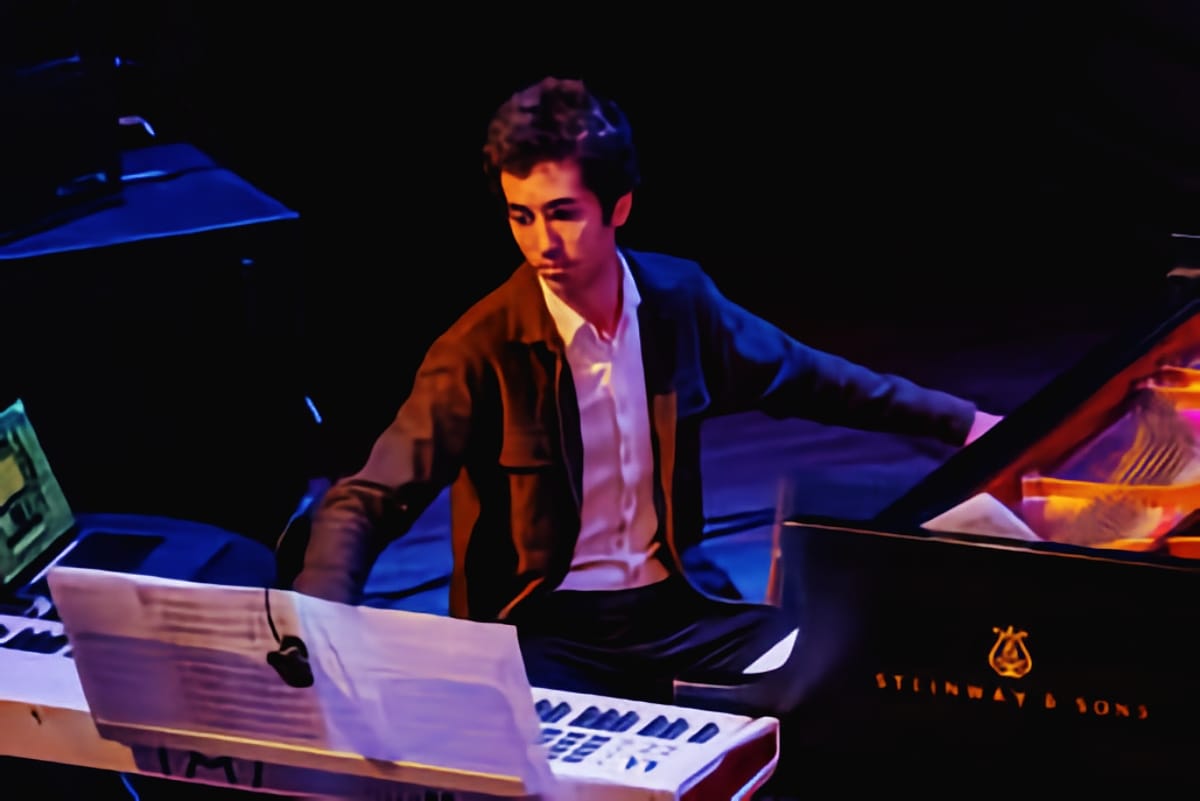
Lawrence: Were you raised on jazz and classical music? When did you discover microtonality?
Phillip: I grew up studying classical piano from age five. My dad is a composer. He went to school for new music composition. He also works in film and theater. So there was a lot of music at home, and he's a jazz fan. He had Bill Evans, Oscar Peterson, Erroll Garner, and Thelonious Monk albums at home. So, I grew up with all that around me.
In terms of microtonality, I can't think of a moment where it started. It just crept into my music slowly but surely over the years. Back in my early twenties, I started to use some quarter tones in some of my concert pieces when I was in school for composition and began to learn about some just intonation things.
I think I've grown and caught up with it as the world around me has, too. I think there is more and more awareness of just intonation, of different EDO systems—equal divisions of the octave—and what they can do and why you might use them amongst people interested in avant-garde music today. I think I'm honestly just riding the wave a bit.
But it is increasing in my work, though I don't think it will ever dominate what I do because, at the end of the day, I play the piano, and a lot of my music happens on the piano, and it's not going to be microtonal for the most part. So, it's never going to be a dominant thing in my music. But I will always have projects dealing with it because it’s like discovering the world again. When you find a microtonal world you want to write in, you can find harmony again—a new thing to discover.
Macrotonality
Lawrence: Something that has always been a question for me around microtonal music and the various EDO systems—do you have to modify traditional instruments?
Phillip: It depends on the family of the instrument. Generally, people don't modify instruments. They find solutions on the instruments they have. Of course, it'd be great if we could just design instruments for different systems, but that's unrealistic.
There are no frets for string players, so they can essentially play anything. They just have to be able to hear it. For wind players, it's often about changing your embouchure and finding alternate fingerings that change the tuning. It can get quite confusing because sometimes those alternate fingerings aren't where you expect them to be in terms of your normal fingering patterns.
For Loop 7, which we're talking about today, the guitarist was able to retune the strings to very precise things that we figured out to be able to get the notes of my piece so that when he plays, we know that if he plays on the sixth fret on the G-string, it's going actually to be this note, and that's exactly what we need. So that's called scordatura.
And for the vibraphone, we used this technique where you put mortite, which is like what you use to seal your window in the winter.
Lawrence: It's like a grey, string-like putty.
Phillip: Yeah. You could also use BluTack or people also use magnets—anything that can stick to the edge of the vibraphone. It essentially adds mass to the bar, which lowers the pitch. So you can lower the pitch of vibraphones by doing that.
Lawrence: Is the main draw of composing in that realm, for you, just about more palette to work with?
Phillip: I think, broadly speaking, it's that. I'm someone who loves harmony. I think all of my music deals with harmony in a pretty fundamental way. I'm drawn to microtonal music because of what it offers in terms of new harmonies and new sounds.
But that is not universal. Some people are drawn to microtonality because it creates certain sonic phenomena when you have two notes that are very close to each other. You hear the beating pattern, and it creates these amazing sonic phenomena. That's cool and wonderful, and I love some of that music, but that's not what I'm interested in.
I had a teacher who once said, "Actually, it shouldn't be called microtonality. It should be called macrotonality."
Lawrence: All the tones! (laughter)
Phillip: Well, his reason was microtonality makes it sound like it's very small intervals like it's all intervals that are smaller than a half step. But actually, he didn't like those intervals. He thought they were ugly and dissonant. But it's macro—about bigger intervals than steps and how they interact.
So I'm kind of more in that camp a bit. I like interesting thirds, wide seconds, and strange fourths in that range rather than small intervals that create these sorts of beating patterns.
There might be a third category of microtonal music to make what you already know strange.
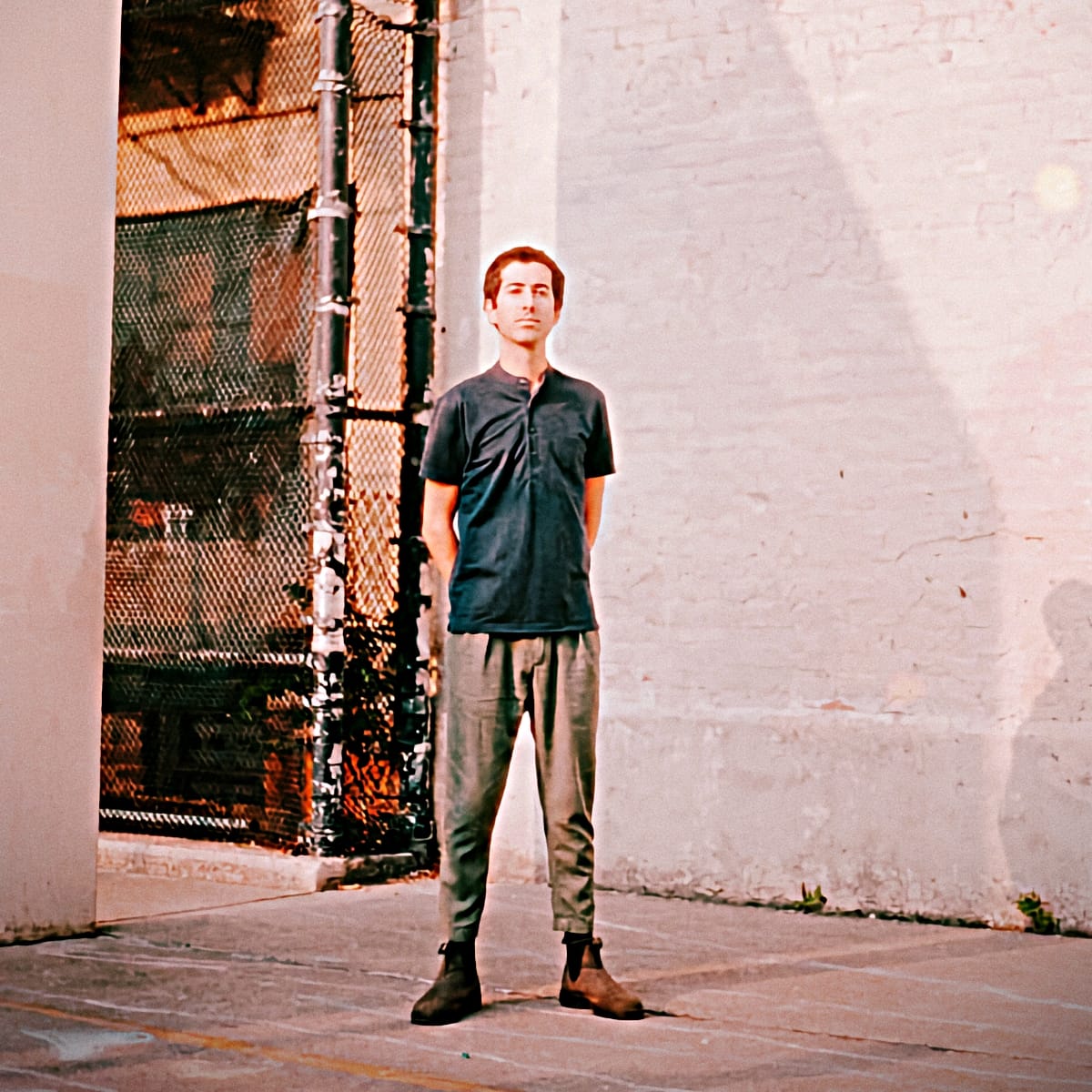
Lawrence: Could you tell me about the EDO systems? How did those emerge in Western music? Did somebody sit down and discover them or are they an invention?
Phillip: I would say an invention. I would also preface everything I'm about to say about the history: I'm not a historian of this, and I'm not using these things because of any particular historical knowledge. I've picked up what I've picked up by being around it a little bit.
EDO means ‘equal division of the octave.’ So, take the octave and divide it into an equal number of steps. When discussing equal temperament, which is so-called normal for Western music, that's just 12 EDO. That's what that means. So, all the other EDOs are a logical possibility or extension from the fact that we have 12 EDO already.
The fact that we got to equal temperament is another historical story that goes on for several hundred years, from the medieval period to the late nineteenth and early twentieth century. There was no equal temperament until a little more than a hundred years ago. Yes, piano keyboard instruments had 12 notes. That's true. But they were not tuned equally for most of the history of these keyboard instruments. They were tuned in different ways, sometimes for different pieces.
The big struggle or kind of push and pull that led to the compromise of equal temperament or 12 EDO is how to get your thirds and fifths to sound good. Because if you get your thirds sounding good, your fifths start sounding bad; if you get your fifths sounding good, your thirds start sounding bad when you want to play music in all 12 keys. This kind of constant push and pull led to this thing called meantone, which was often used in the eighteenth century.
Eventually, composers started to write in more and more keys. Some keys don’t sound good in meantone, whereas others sound great. So equal temperament ended up being this sort of historical compromise that said, "Well, we'll have all the keys sound okay." And once all the keys sound okay, we’ll be able to play in all 12 keys, which composers increasingly wanted. But it's a big compromise, the tuning system we take for granted in the West.
The weird thing about EDO systems is that they're not based on sound. They're just entirely theoretical. It's just mathematical. There's nothing about how it sounds—it has nothing to do with the overtone series.
The reason people use 22 is that it just so happens that if you look at the intervals that you end up with in 22, there are a lot of intervals that very closely approximate some really nice just intonation intervals. 22 just so happens to have many notes very close to the fifth partial against the fourth partial and the seventh partial against the fourth partial. Those are good intervals that people interested in just intonation often want in their music, and 22, just by chance, happens to have a bunch of them.
When writing the piece, I wasn't thinking, "Now I'm going to use the fifth partial here, and now I'm going to use the seventh partial." I wasn't thinking super explicitly about that. But when you look back at the chords that I did write, you will find a combination of very pure consonant intervals and other more dissonant ones in most of the chords of the piece.

'They're Doubling Me'
Lawrence: My understanding, both from the material I've read and as a listener, is that one of the big differences or advancements between Loop 7 and Filters, one of your previous works, is that it's no longer just piano. You've brought in multiple other collaborators and instrumentation.
Phillip: The Filters work that you mentioned earlier, which is a solo piano recording also on Greyfade—I've done it with a large ensemble. It was performed once in a large church with musicians playing different instruments spaced all around. They have my entire part and certain parameters—instructions for when they can enter or exit and which lines they can take. But essentially, they're doubling me, and what's happening is the orchestration is constantly shifting in a kind of kaleidoscopic way over the 30 or 40 minutes that we're playing the loop in a very fluid way. So that's always been one version of the piece, which we haven't recorded.
So, the pieces are the material, and then we can perform and record them in different ways. Loop 7 is the first time we're giving a window into "Okay, this doesn't have to be a solo piano work." We've now added guitar, we've added vibraphone, we've added very subtle synth, and we've added some live processing electronics.
For me, it isn't a huge departure from how I've conceived the pieces in the past, which is that the piano is always playing the whole piece. That never changes. And we just have other sonic elements that float around the space, add to it, support it, and amplify certain things. It makes you more aware of this base note on this repetition and then more aware of its internal voice. But the piano is always at the center, always there.
The new thing is that we're making a recording that does this, and we haven't released something like that before.
Lawrence: I'm so fascinated about the mechanics of the separate recordings. Could you tell me about using the Yamaha keyboard and what's happening there?
Phillip: I must hand it to Joseph Branciforte of Greyfade because this was his idea. I wrote some loops last year. I sent them to Joe, saying, "I have some new material. I'd love to record them. This one, it's in 22 EDO. I don't think we’ll be able to record this on a real piano because, as far as I know, there haven't been any 22 EDO pianos created. Here's a mockup I made with software, and maybe we could make a produced software instrument version of this and record some other instruments on top." And he said, "Maybe, but I don't know about that. It's missing some important element."
He wrote a little later and said, "I have an idea." And it was crazy. Well, first, we had this idea to record it one note at a time and then varispeed it so that the pitch would shift, and we'd record each note at different tempos so that when we change the pitch, it would be at the right tempo and everything would line up.
Lawrence: Oh my God. There'd be a special room for you in Bellevue by the end of that. (laughter)
Phillip: It would've worked, and it could have been cool in a certain way because we would've had each note of the piece on a different track and could have mixed it in a crazy way. I'm still curious about that idea for some future thing.
But basically, what we ended up doing is: I performed the piece on my MIDI keyboard with piano tech software in my DAW, as I described—each step on my keyboard is one of the EDO steps.
We then took that and were lucky to have Yamaha let us use their Disklavier pianos and, most crucially, their space, technician, and tuner. When we were there trying out the original varispeed idea I mentioned, this tuner named Shane from Yamaha—the in-house guy, super amazing technician, and tuner at Yamaha—was interested in what we were doing. He said, "Yeah, I could retune the pianos for you. No problem." We had assumed we couldn't retune Yamaha's top-of-the-line pianos.
Lawrence: Well, you can't. (laughter)
Phillip: That's right! But we had assumed they wouldn't allow it, and Shane just said, "Oh yeah, I could do that. No problem." They're essentially his pianos that he's taking care of.
So what we did is we muted half the notes of the performance. We separated it into two different MIDI tracks. We muted, let's say track A, which has 11 of the notes of my performance and 11 of them muted. Track B has the reverse—the other 11 are muted, and the other 11 are present.
We then start the timeline at zero, put the MIDI through Joe's laptop into the Disklavier with the piano retuned for those 11 notes of the piece, and hit record. We then retune the piano for the other 11 notes of the piece, use track B, which now has those notes, hit record again, also with the timeline starting at zero, and we can stack the audios together and have a performance of the piece. Same piano, same room, same mic placement, same day. And so it creates the perception of a 22 EDO piano in the same space and room with the same mics.
Lawrence: What an 'aha' moment, right? That must have been a visceral, somatic charge you must have gotten, realizing that could work.
Phillip: I was skeptical until it happened, to be honest. We all were. It was an experiment where we thought this would work, but who knows? And it was really weird to hear the Disklavier play half of my piece back at once. It would play 11 of the 22 notes at a time of the piece.
Lawrence: That alone is kind of interesting.
Phillip: Yeah, for sure. After that, we had a performance of the piece that we were married to. We already knew we liked the performance because I could edit that in the MIDI before we even recorded. Then we got together at Joe's studio in Mount Vernon and brought Ty Citerman and Aaron Edgcomb up to record the guitar and vibes, and they just overdubbed several takes. And we used bits and pieces of all the takes.

Lawrence: Could you explain what a Disklavier is and how it extends the piano’s capabilities?
Phillip: It's a digital player piano, essentially. Disklavier is Yamaha's version of this. Steinway has one called Spirio. It's hooked up to a piano and can record what you play on the keyboard and with the pedals. And it can also accept MIDI—you can plug it into USB and play MIDI. You can download files onto it. What it's used for is up to anyone who owns one. But it can be used creatively as I've done, and people have.
You asked earlier about music that's impossible to play. That's something a Disklavier can be used for—you can program music that's impossible to play by two hands, by a human being, onto a Disklavier with MIDI and create a performance of a piece that way. I imagine if Conlon Nancarrow were alive in the time of the Disklavier, he would've used a Disklavier.
Nothing's Ever Done
Lawrence: You do a lot of work with Wayne Shorter's work, and I'm curious how being so immersed in another composer's scores affects your creative process. Do you have to be careful, either from influence or inadvertently cribbing?
Phillip: Part of the answer is that Wayne Shorter is almost un-copyable, so I couldn't if I tried. No one sounds like Wayne. I don't know how he does it. He just hears harmony, melody, rhythm, and everything in a completely personal, unique way. So I almost feel like you just look at it and appreciate it.
I say that, and yet, at the same time, he kind of invented all of modern jazz harmony. That's a little overstating, but so much of our language today in modern jazz goes back to Wayne. Wayne is its own thing. But it's not just Wayne—it's like things that Wayne made possible.
I worked on Wayne Shorter’s opera, and then after working on the opera, I ended up scanning all the music at his house, and we're currently working on publishing it. He kept most of the music from his whole life. So basically almost everything he wrote, I ended up scanning and cataloging.
One thing I got from being that close to so much of the music is how a piece was never done for him. I would find versions from across the years of pieces, including some that go back to the sixties, and he would still be changing a rhythm, changing a melody note, adding a different chord change, whatever. There are so many different versions of a piece that we want to create an urtext edition of Wayne Shorter’s compositions and songs.
Sometimes, 10 different copies of a Wayne Shorter piece don't all match, and then the recording doesn't match any of them. That is fascinating, and I've tried to keep that mentality. For example, my quintet record Abiding Memory—we recorded the music over two years ago, but we're still playing the music live. And I still make changes every time we play it in rehearsal. "Ah, you know, that thing, it's not working. Let's try it like this." That is a huge lesson that nothing's ever done.
And the other big thing is how he copies himself. So he is not afraid to just repeat himself, just take something he's already written and turn it into something completely different. I don't know if it's a bit of the capitalist mindset, but I think many composers today feel like we must create something new every time we sit down to write. And it just doesn't have to be that way. You can take the material you’ve already written and spin it, drawing it out differently. You can do the same thing you've done last week again, in a different way. Get deeper into it, find more meaning, and turn it on its head.
Keep up to date with Phillip Golub at phillipgolubmusic.com. Purchase Phillip Golub’s Loop 7 from Greyfade or Bandcamp.
Check out more like this:
 The TonearmLawrence Peryer
The TonearmLawrence Peryer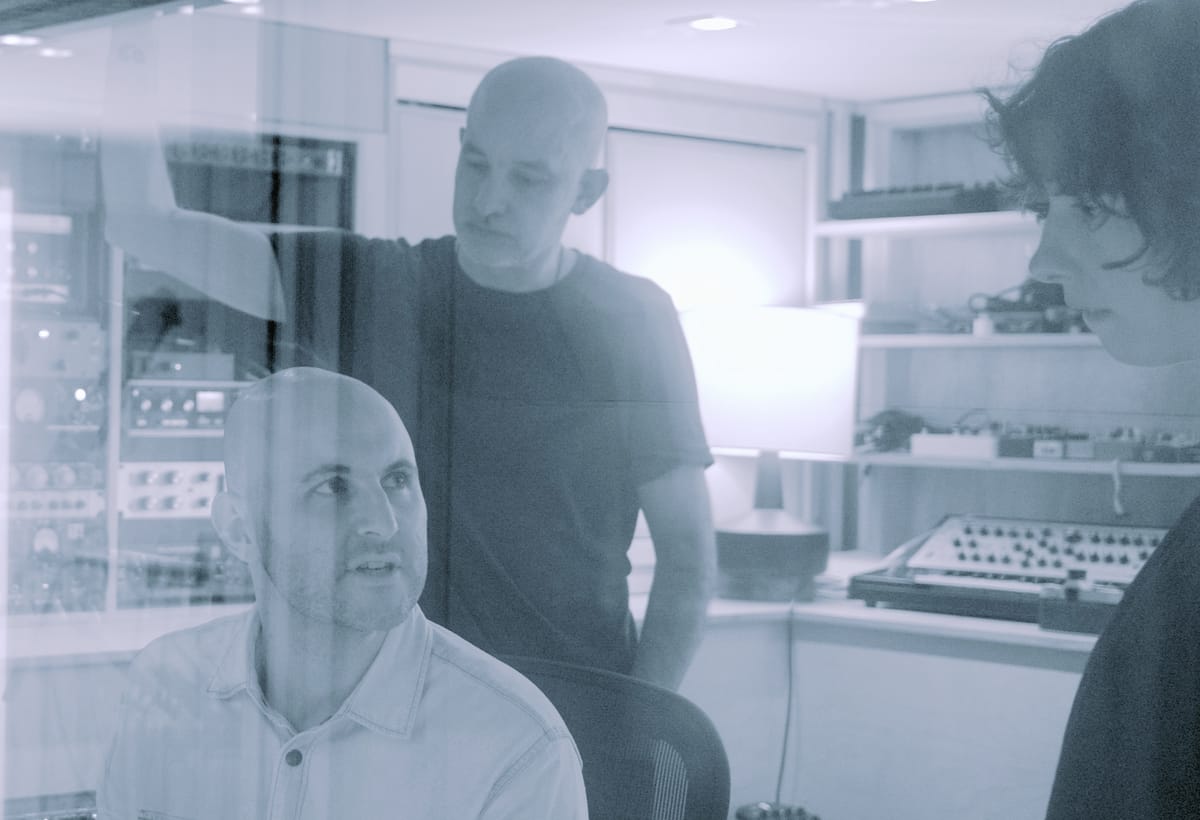
 The TonearmMichael Donaldson
The TonearmMichael Donaldson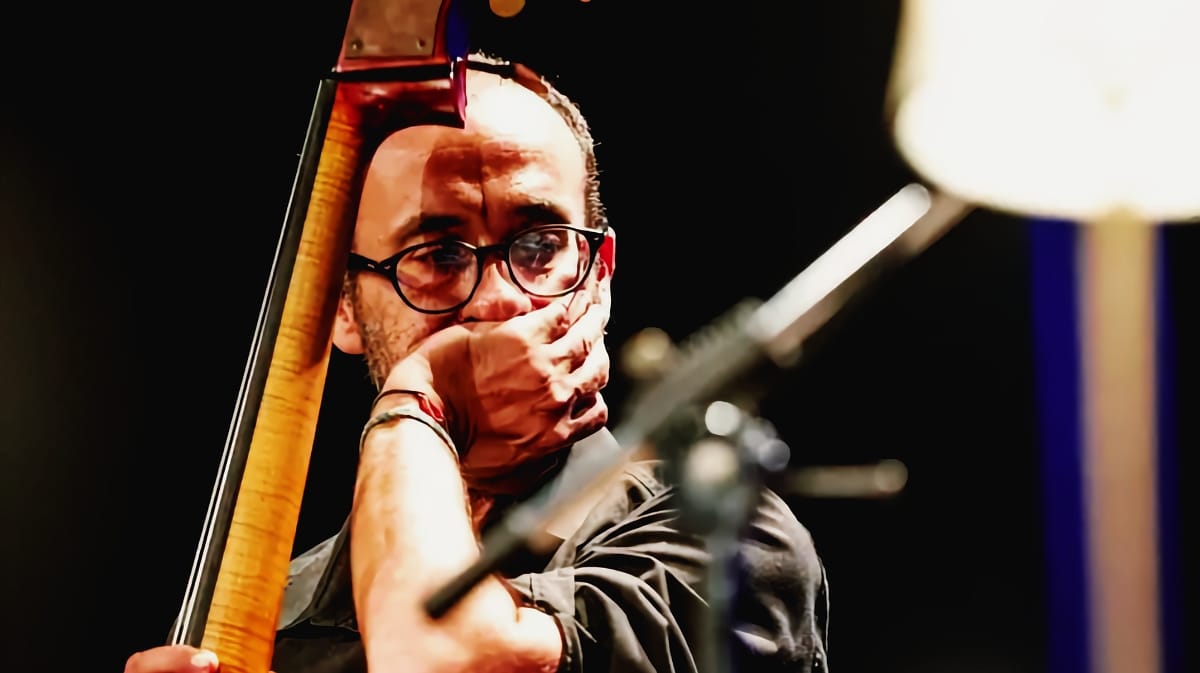



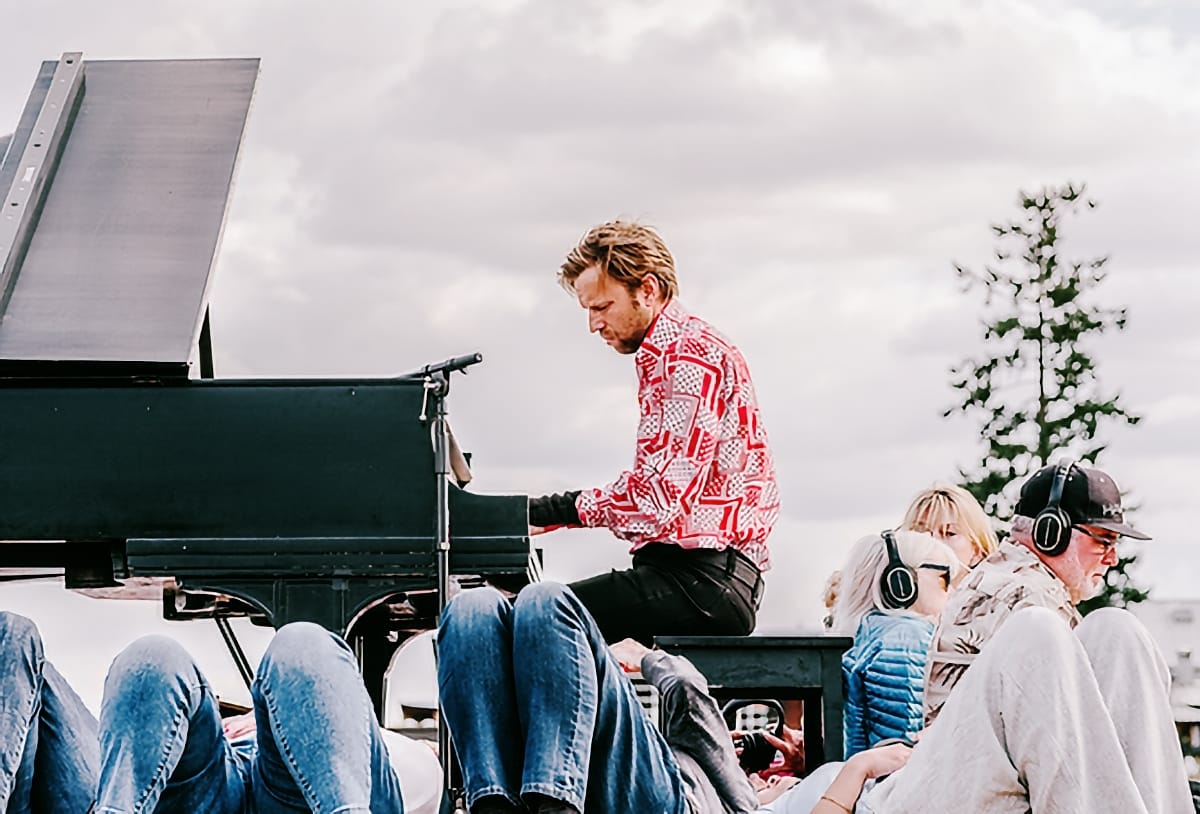
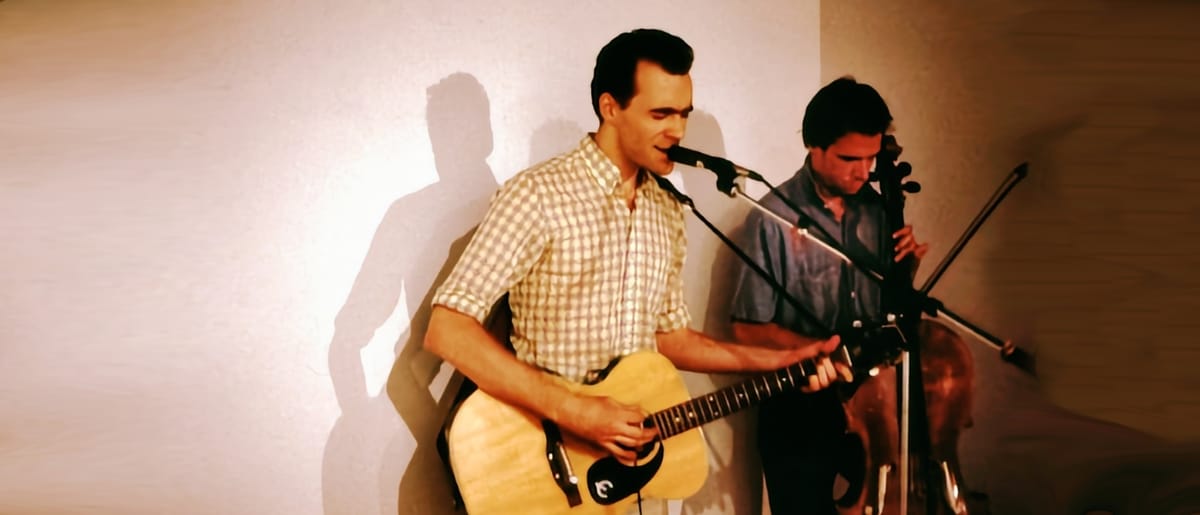
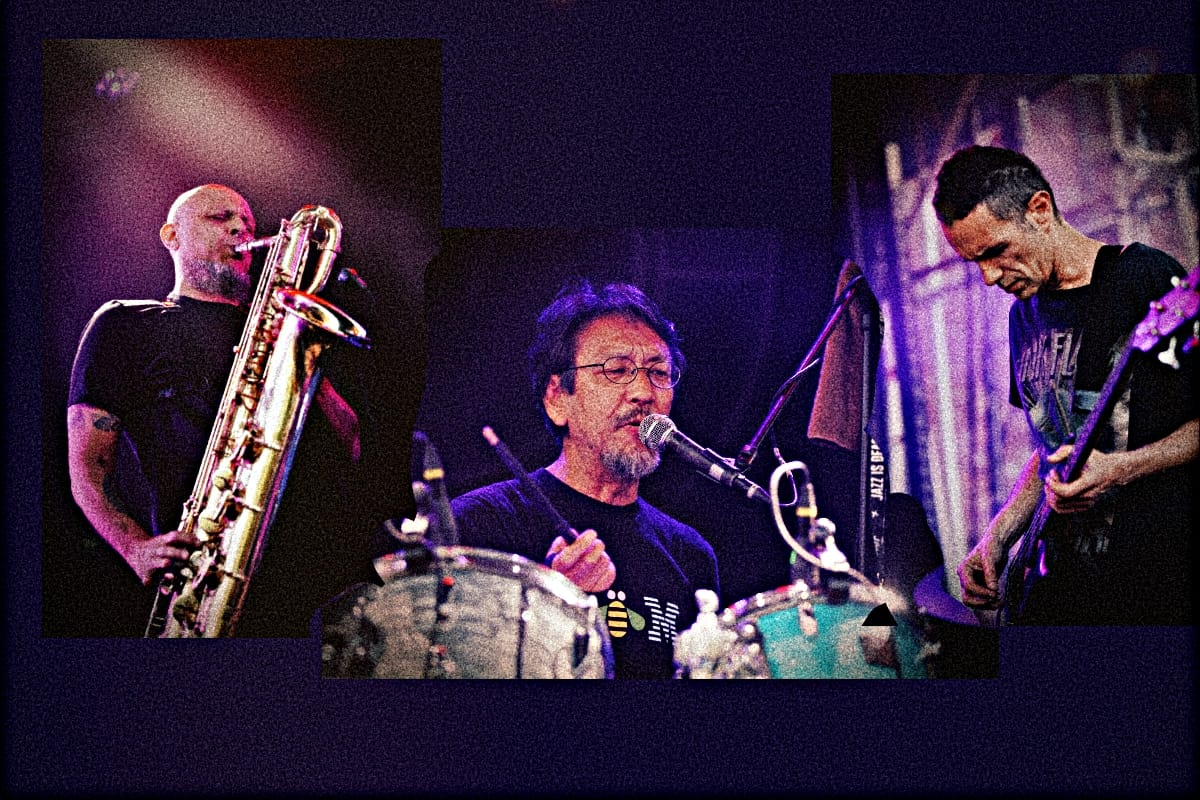
Comments